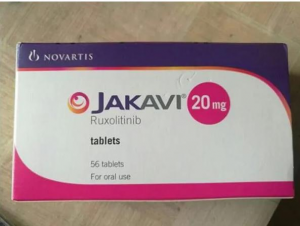Ruxolitinib is a type of targeted cancer drug. It is mainly used to inhibit the activation of the JAK-STAT signaling pathway and lower the signal that suppresses the abnormal enhancement, thus achieving therapeutic effect. It works by blocking your body from producing substances called growth factors. It can not only cure a single disease in the area of hematology therapeutic area, but also treat classical myeloproliferative neoplasms (also called the BCR-ABL1-negative MPNs), JAK exon 12 mutations, CALR, and APL, etc.
What’s the recommended starting dose?
It can cause side effects including myelosuppression as well, resulting in rare, but potentially serious clinic manifestations such as neutropenia, thrombocytopenia, leukemia and anemia. So particular care must be taken in determining starting doses when prescribing for patients. The recommended starting dose of Ruxolitinib mainly depends on the patient’s PLT count. For the patients whose platelet count is more than 200, the starting dose is 20 mg twice daily; for those with platelet count in the range of 100 to 200, the starting dose is 15 mg twice daily; For patients with platelet count between 50 and 100, the maximum starting dose is 5 mg twice daily.
Precautions before taking Ruxolitinib
Firstly, choose a doctor with rich experience in treatment with Ruxolitinib. Tell your doctor if you are allergic to it, or if you have any other allergies. It may contain inactive ingredients, which can cause allergic reactions or other problems.
Secondly, regularly test your PLT counts. Complete blood count and platelet count must be recorded every 2-4 weeks since taking Ruxolitinib until doses are stabilized, and then be tested if clinical indications require so.
Thirdly, adjust doses properly. The starting dose is seldom adjusted if you take Ruxolitinib but have low platelet count at the beginning. When your PLT count rises as the targeted unite therapy proceeds, you can gradually increase your dose by following your doctor’s instructions carefully.
Finally, tell your doctor your medical history, especially of myeloproliferative disorders such as kidney disease, liver disease, and skin cancer. Other drugs or treatments have to replace Ruxolitinib if you are not suitable for it.
Post time: Apr-25-2022

